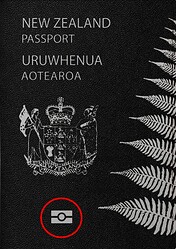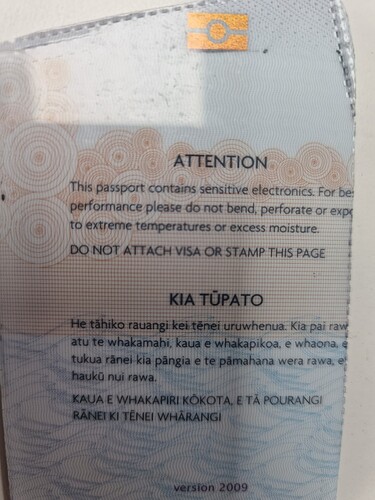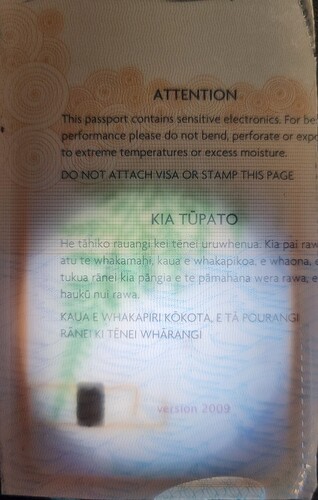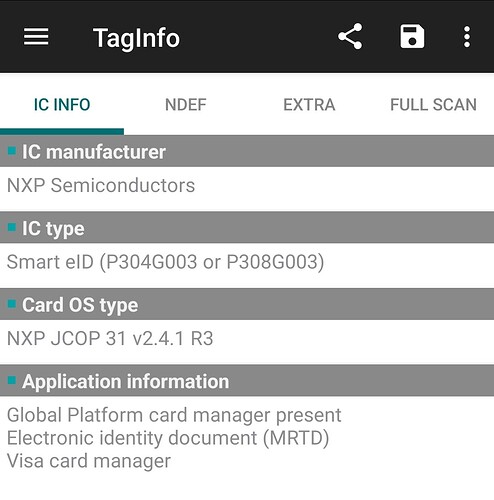Passport RFID 
I’m sure most people are aware that almost all countries use NFC in their passports.
This biometric symbol is usually printed on the front cover of biometric passports (![]() ), indicating that an electronic chip has been embedded in the passport and the polycarbonate leaf in the front of the passport
), indicating that an electronic chip has been embedded in the passport and the polycarbonate leaf in the front of the passport
I had an old passport that I was going to destroy
The keen observers amongst you will note the shredder marks along the edge, I was just about to destroy this, but Idecided that It may be worth documenting this…for some reason ![]()
Anyway
Here’s the “DangerousThings X-Ray” ™
Here’s the half melty of the polycarbonate, I used Acetone, as my preferred chloroform stocks are running low ( I’ve been a busy boy ![]() )
) ![]()
TagInfo Chip Info
Read Range
Of course the readers at Ports of Entry are normally a forced surface contact read.
However, as a quick Idea, A Phone is ~20mm Flipper ~40mm
Thats probably enough about that




